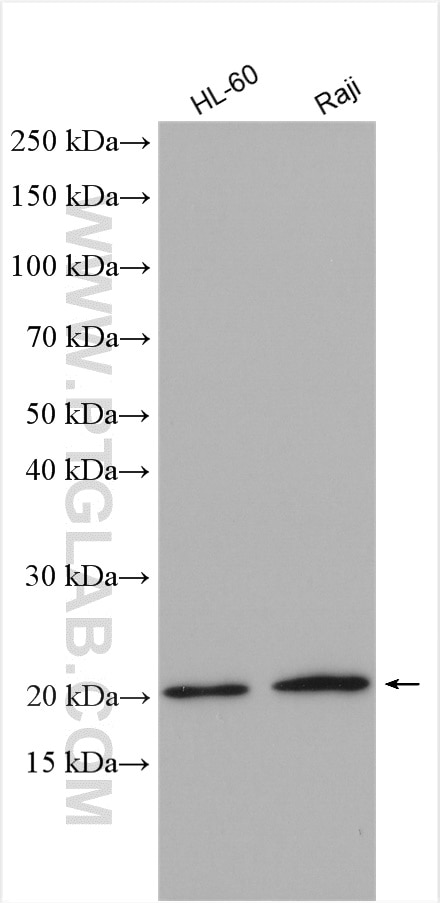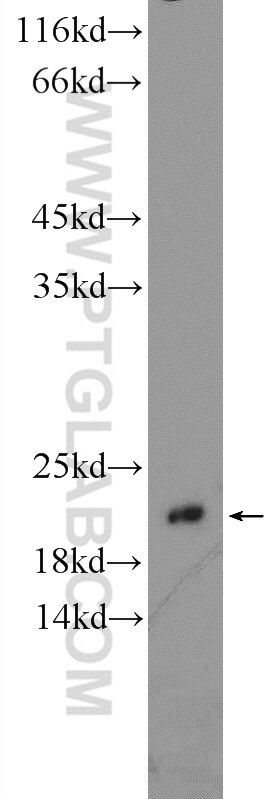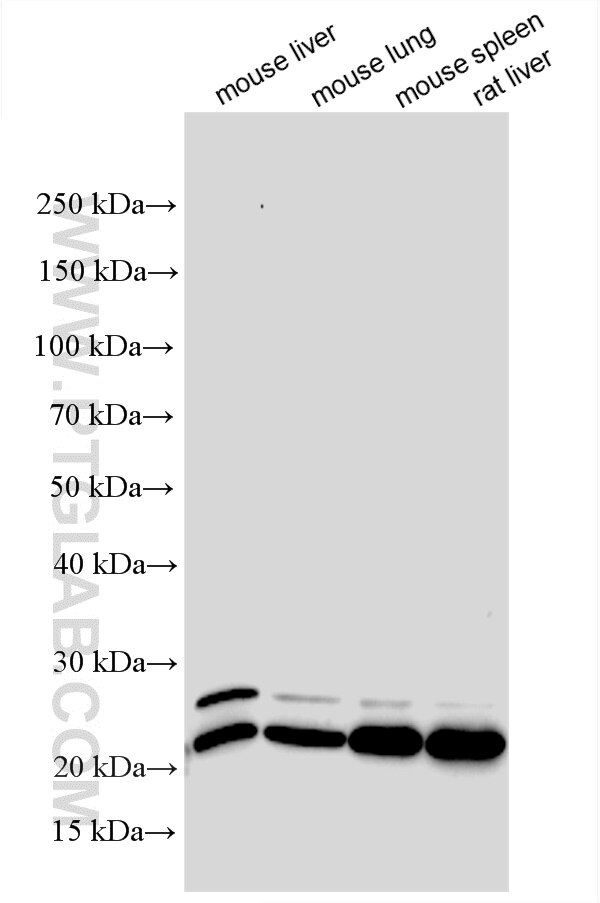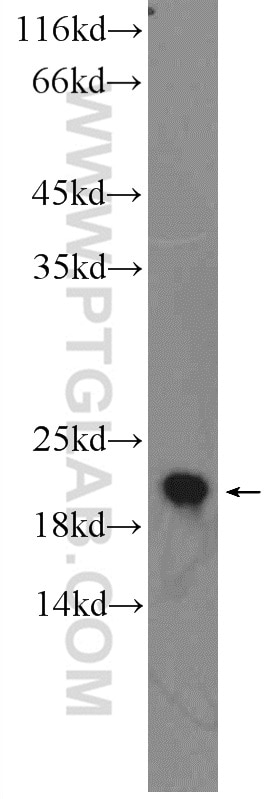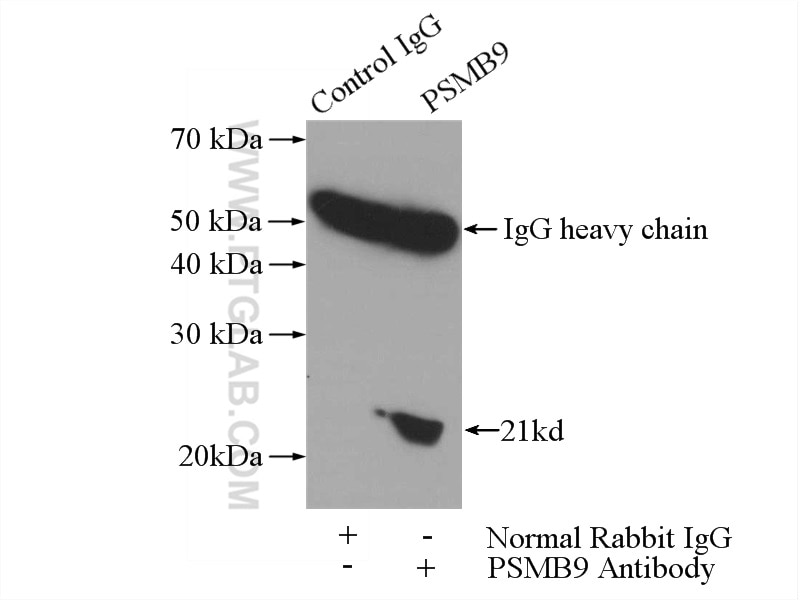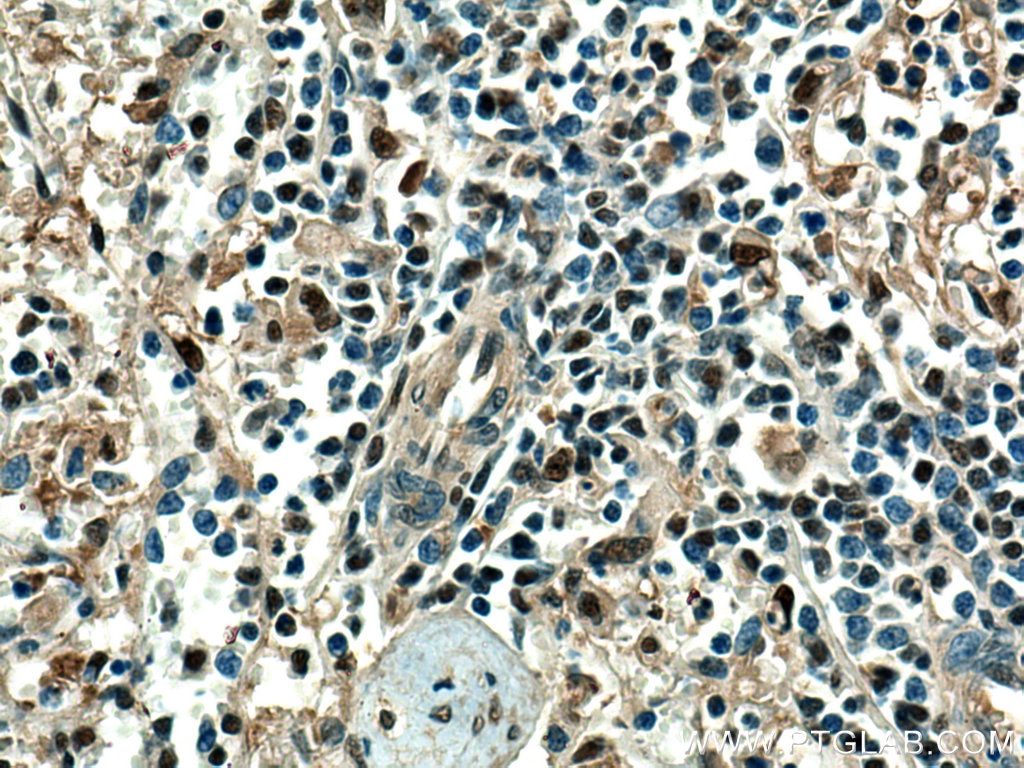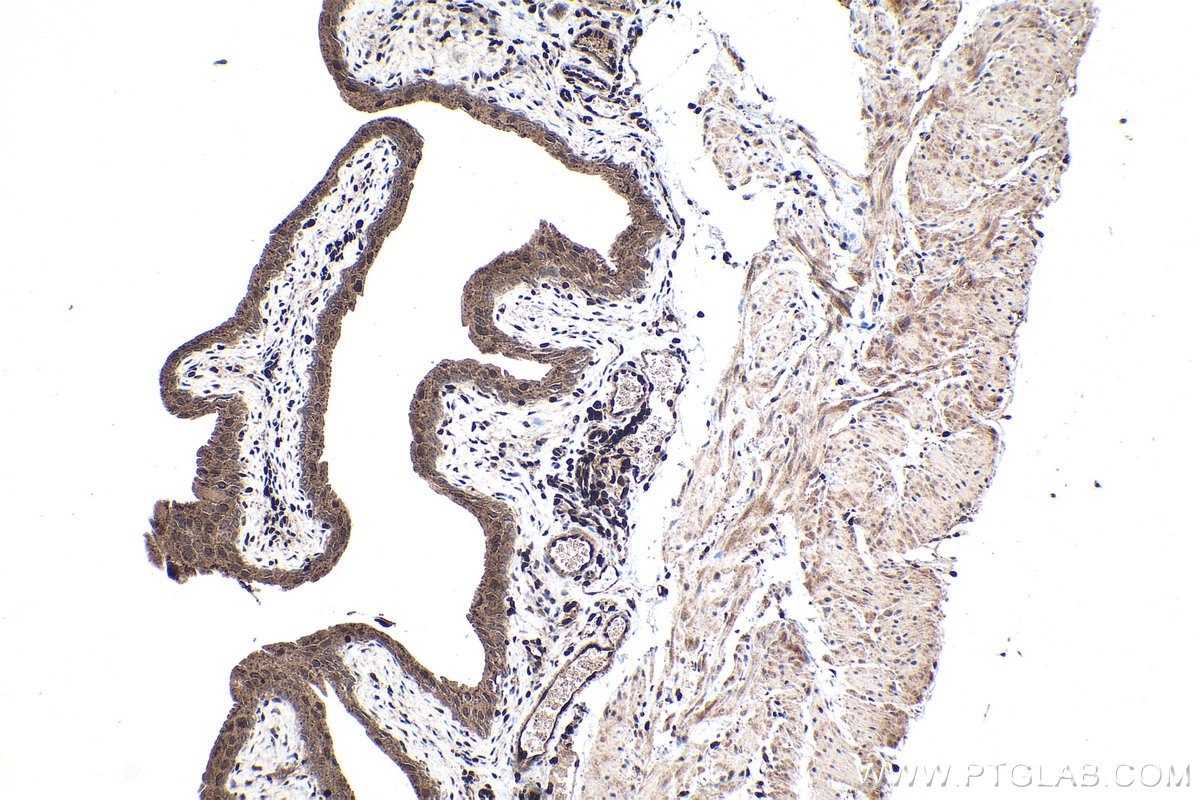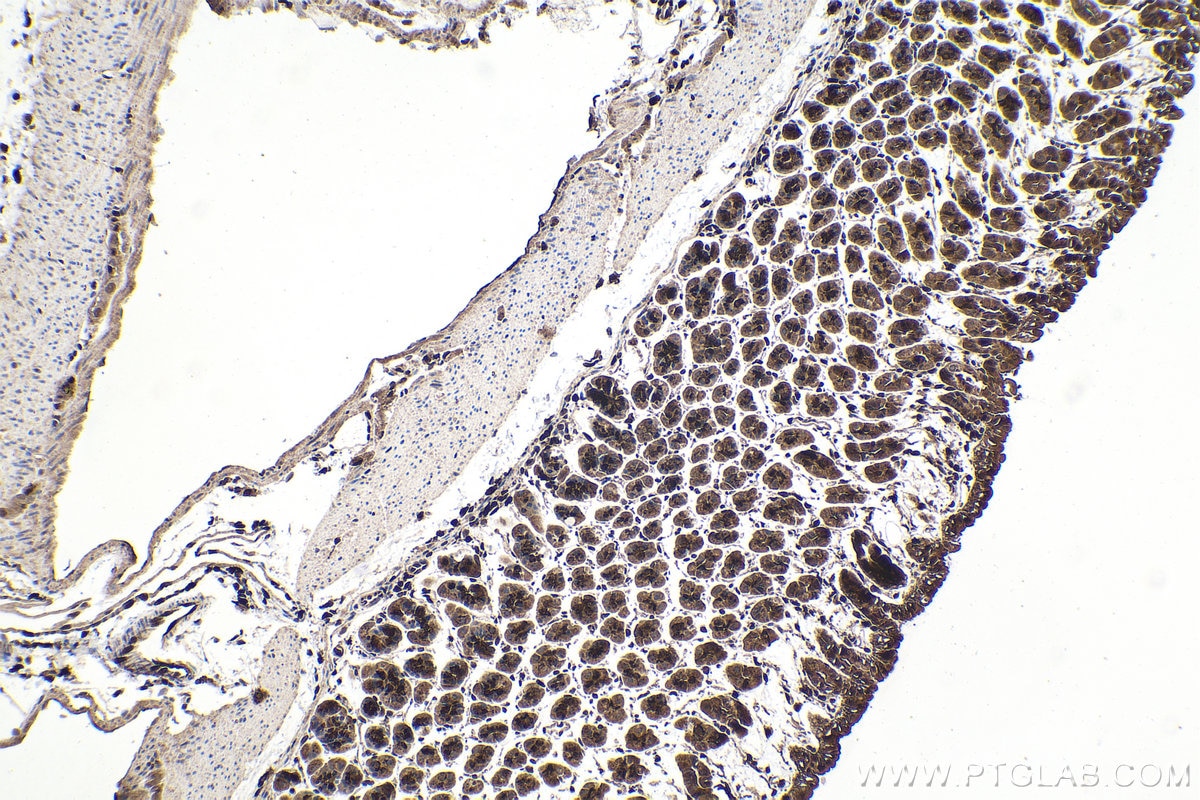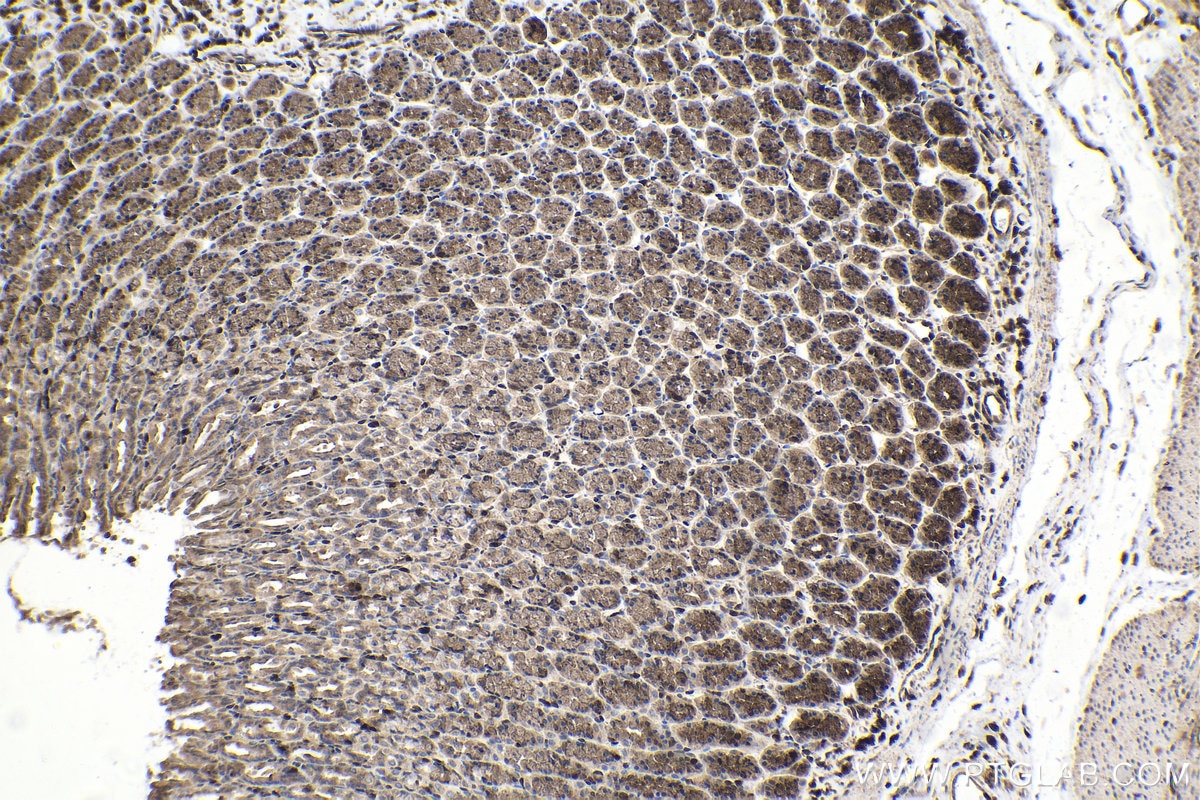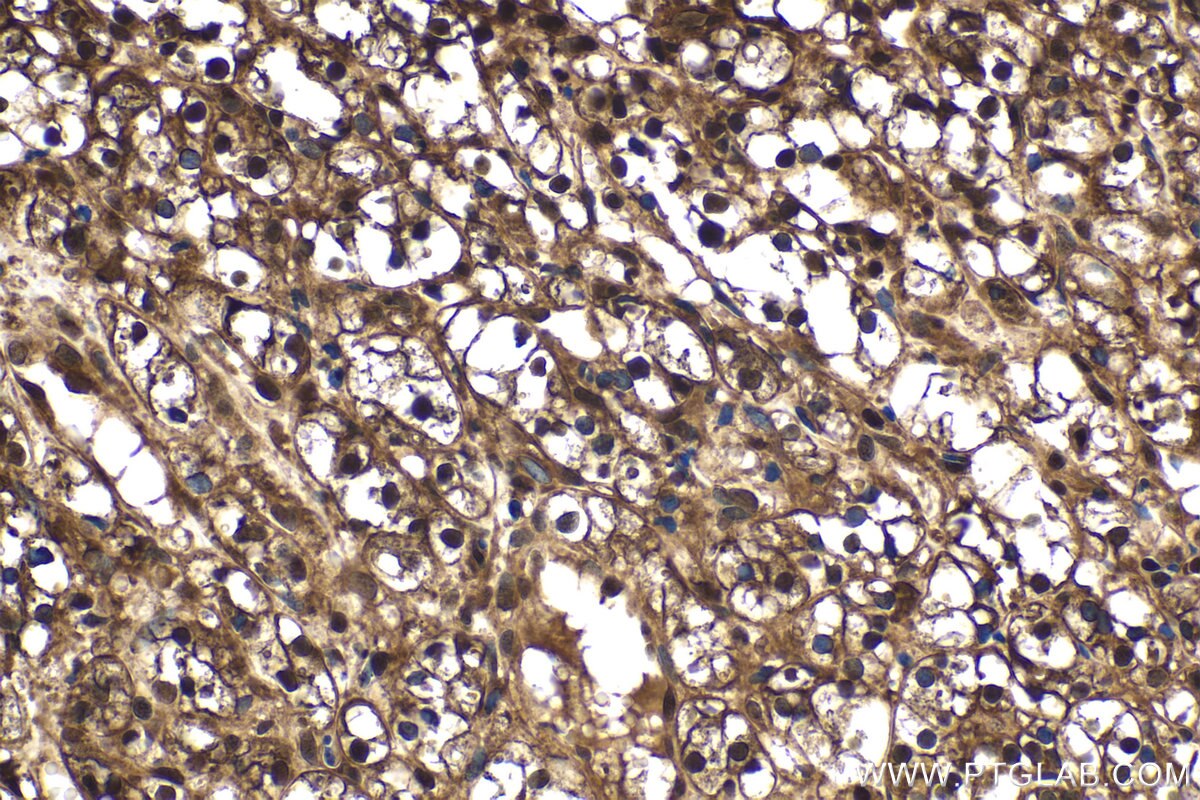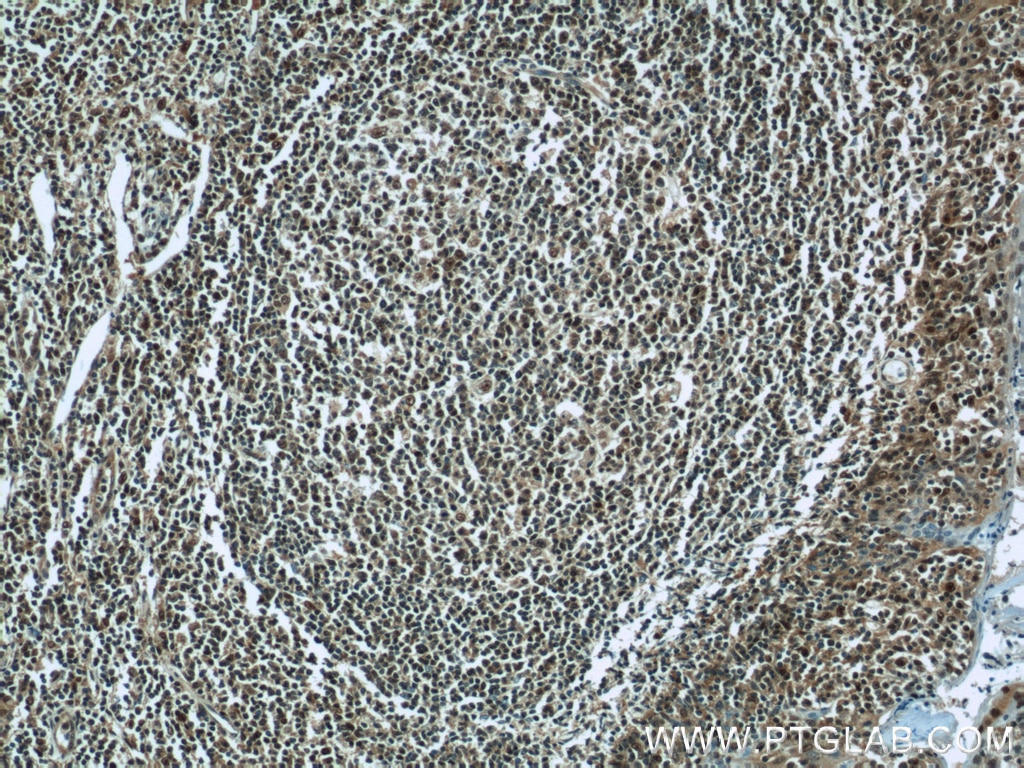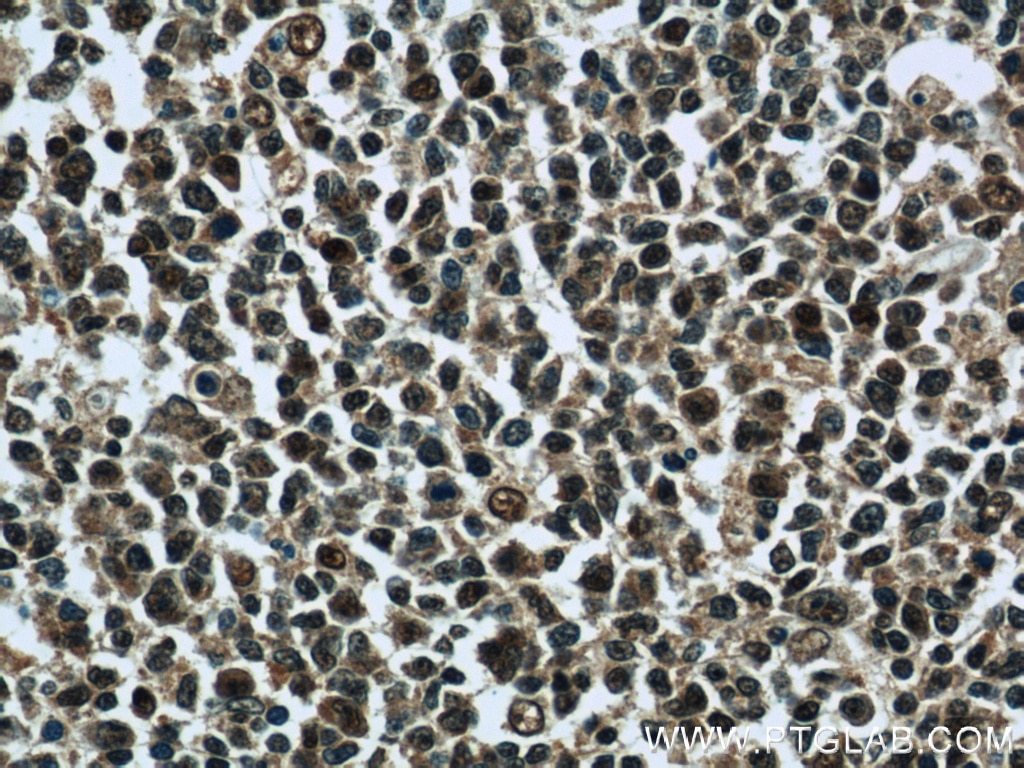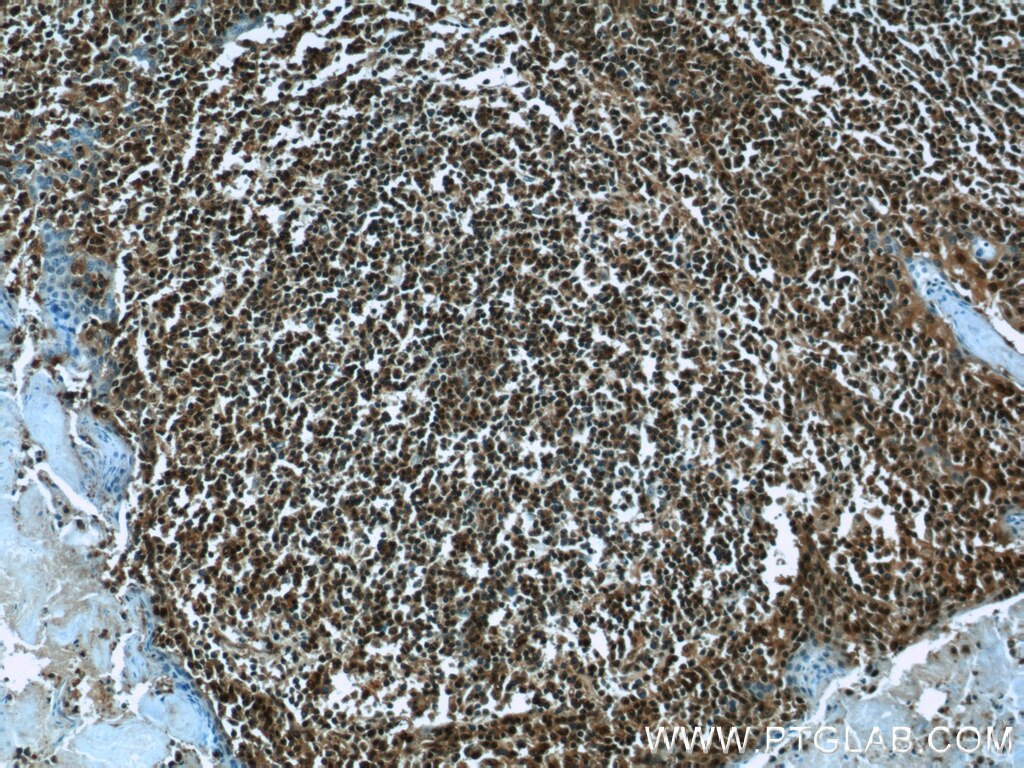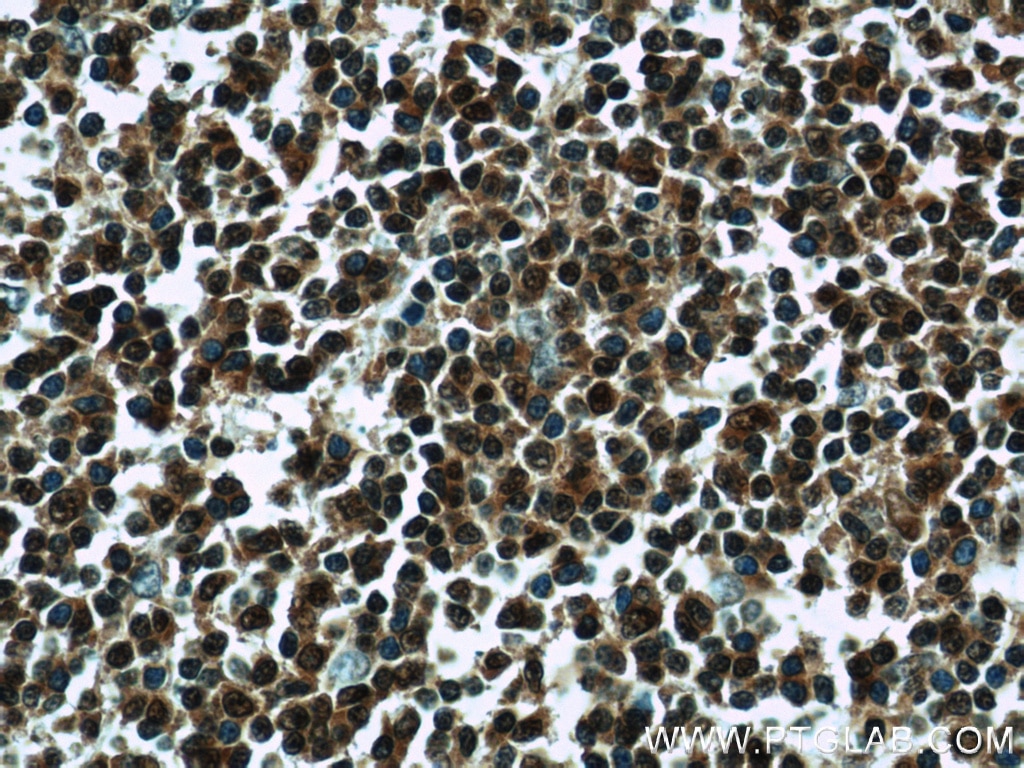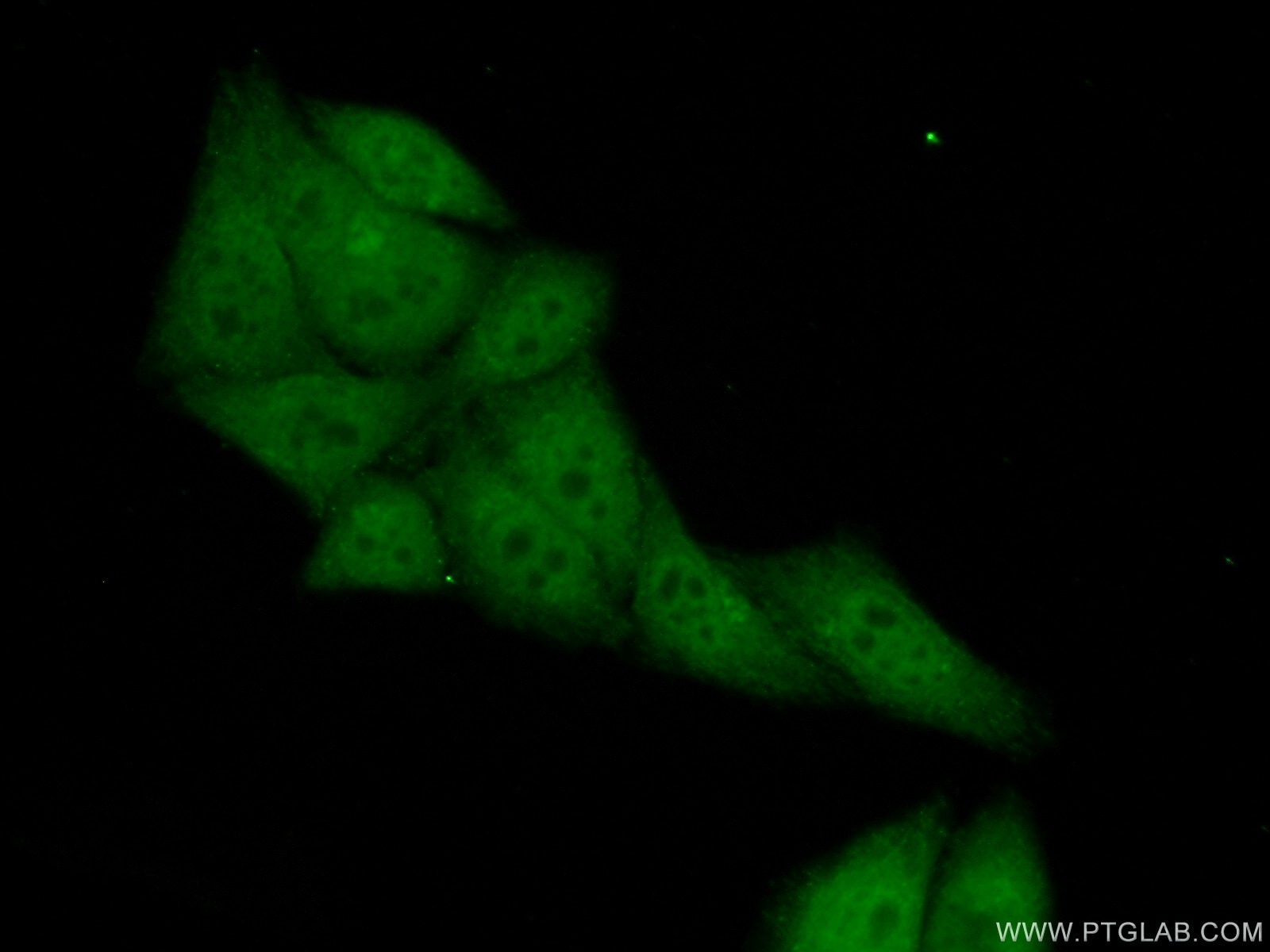- Phare
- Validé par KD/KO
Anticorps Polyclonal de lapin anti-PSMB9
PSMB9 Polyclonal Antibody for WB, IP, IF, IHC, ELISA
Hôte / Isotype
Lapin / IgG
Réactivité testée
Humain, rat, souris
Applications
WB, IHC, IF/ICC, IP, ELISA
Conjugaison
Non conjugué
N° de cat : 14544-1-AP
Synonymes
Galerie de données de validation
Applications testées
| Résultats positifs en WB | cellules HL-60, cellules Raji, tissu hépatique de rat, tissu hépatique de souris, tissu pulmonaire de souris, tissu rénal de souris, tissu splénique de rat, tissu splénique de souris |
| Résultats positifs en IP | cellules Raji |
| Résultats positifs en IHC | tissu splénique humain, tissu d'amygdalite humain, tissu de carcinome à cellules rénales humain, tissu d'estomac de rat, tissu d'estomac de souris, tissu vésical de souris il est suggéré de démasquer l'antigène avec un tampon de TE buffer pH 9.0; (*) À défaut, 'le démasquage de l'antigène peut être 'effectué avec un tampon citrate pH 6,0. |
| Résultats positifs en IF/ICC | cellules HepG2 |
Dilution recommandée
| Application | Dilution |
|---|---|
| Western Blot (WB) | WB : 1:1000-1:6000 |
| Immunoprécipitation (IP) | IP : 0.5-4.0 ug for 1.0-3.0 mg of total protein lysate |
| Immunohistochimie (IHC) | IHC : 1:50-1:500 |
| Immunofluorescence (IF)/ICC | IF/ICC : 1:50-1:500 |
| It is recommended that this reagent should be titrated in each testing system to obtain optimal results. | |
| Sample-dependent, check data in validation data gallery | |
Applications publiées
| KD/KO | See 1 publications below |
| WB | See 10 publications below |
| IHC | See 2 publications below |
| IF | See 4 publications below |
Informations sur le produit
14544-1-AP cible PSMB9 dans les applications de WB, IHC, IF/ICC, IP, ELISA et montre une réactivité avec des échantillons Humain, rat, souris
| Réactivité | Humain, rat, souris |
| Réactivité citée | rat, Humain, souris |
| Hôte / Isotype | Lapin / IgG |
| Clonalité | Polyclonal |
| Type | Anticorps |
| Immunogène | PSMB9 Protéine recombinante Ag6048 |
| Nom complet | proteasome (prosome, macropain) subunit, beta type, 9 (large multifunctional peptidase 2) |
| Masse moléculaire calculée | 23 kDa |
| Poids moléculaire observé | 20-23 kDa |
| Numéro d’acquisition GenBank | BC065513 |
| Symbole du gène | PSMB9 |
| Identification du gène (NCBI) | 5698 |
| Conjugaison | Non conjugué |
| Forme | Liquide |
| Méthode de purification | Purification par affinité contre l'antigène |
| Tampon de stockage | PBS avec azoture de sodium à 0,02 % et glycérol à 50 % pH 7,3 |
| Conditions de stockage | Stocker à -20°C. Stable pendant un an après l'expédition. L'aliquotage n'est pas nécessaire pour le stockage à -20oC Les 20ul contiennent 0,1% de BSA. |
Informations générales
PSMB9, also named as LMP2, PSMB6i and RING12, belongs to the peptidase T1B family. The proteasome is a multicatalytic proteinase complex which is characterized by its ability to cleave peptides with Arg, Phe, Tyr, Leu, and Glu adjacent to the leaving group at neutral or slightly basic pH. Replacement of PSMB6 by PSMB9 increases the capacity of the immunoproteasome to cleave model peptides after hydrophobic and basic residues. High expression of PSMB9 associated with the poor prognosis of patients with NPC.
Protocole
| Product Specific Protocols | |
|---|---|
| WB protocol for PSMB9 antibody 14544-1-AP | Download protocol |
| IHC protocol for PSMB9 antibody 14544-1-AP | Download protocol |
| IF protocol for PSMB9 antibody 14544-1-AP | Download protocol |
| IP protocol for PSMB9 antibody 14544-1-AP | Download protocol |
| Standard Protocols | |
|---|---|
| Click here to view our Standard Protocols |
Publications
| Species | Application | Title |
|---|---|---|
Mol Cell DNA damage promotes HLA class I presentation by stimulating a pioneer round of translation-associated antigen production.
| ||
Cell Res In-cell infection: a novel pathway for Epstein-Barr virus infection mediated by cell-in-cell structures. | ||
EMBO J Proteasomal degradation within endocytic organelles mediates antigen cross-presentation. | ||
Cancer Lett Deciphering the tumor-suppressive role of PSMB9 in melanoma through multi-omics and single-cell transcriptome analyses | ||
Front Oncol Immune Characteristics and Prognosis Analysis of the Proteasome 20S Subunit Beta 9 in Lower-Grade Gliomas. |
